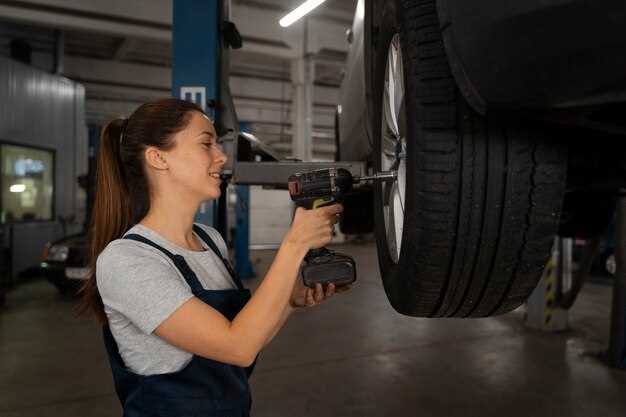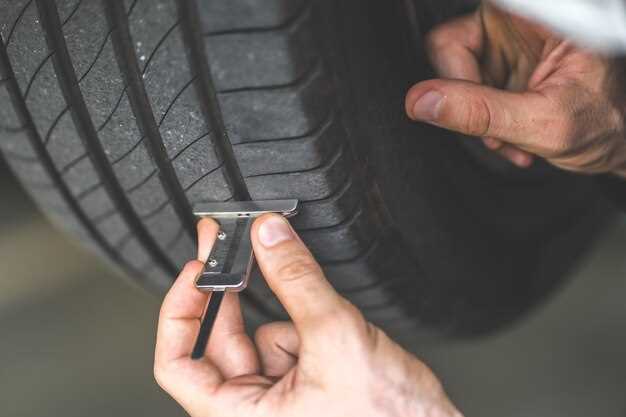
How to Check Tire Tread Depth Correctly
- Arthur Rodriquez
- 0
- Posted on

Understanding how to accurately measure your tire tread depth is essential for maintaining vehicle safety and performance. Tread depth plays a crucial role in ensuring optimal traction on wet or slippery roads, helping to reduce the risk of hydroplaning. Checking your tire tread regularly is a simple yet effective way to assess tire health and performance.
To properly check the tread depth, several methods can be employed, from using specialized gauges to everyday objects, such as a penny. Each method has its advantages, but the key is to ensure that the measurement is taken correctly and consistently. By knowing how to gauge your tire tread depth, you can make informed decisions about when it’s time to replace your tires, enhancing your overall driving experience.
This article will guide you through the process of measuring tread depth, highlighting the importance of maintaining adequate tire tread for safety and performance. We’ll explore the various techniques available and offer tips for effectively monitoring your tires to ensure they remain in optimum condition.
Choosing the Right Tool for Tire Tread Measurement

To ensure optimal performance and safety, accurately measuring tire tread depth is crucial. Selecting the appropriate tool can make this process both efficient and precise. There are several options available, each suited for different needs and preferences.
The most common tool for checking tread depth is the tread depth gauge. This handheld device features a probe that inserts into the tire’s grooves, providing a direct reading of the tread depth. Its simplicity and ease of use make it a popular choice for both professionals and DIY enthusiasts.
Another option is a tire tread depth indicator, which can either be mechanical or digital. Digital gauges often offer more accuracy and can provide readings in various units, making them versatile for different preferences. Mechanical indicators, while slightly less precise, are typically more affordable and require no batteries.
Additionally, some tire manufacturers include built-in tread wear indicators on their products. These markers are molded into the tire and become visible when the tread wears down to a specific depth, signaling that it’s time to check the tire’s condition more closely.
Regardless of which tool you choose, it’s essential to follow the manufacturer’s instructions for proper use. Regular inspections with the right measuring device will ensure that your tires remain safe and functional, ultimately enhancing your driving experience.
Step-by-Step Guide to Measuring Tire Tread Depth

Measuring tire tread depth is essential for ensuring safety and performance on the road. Follow this guide to accurately check your tire tread depth.
First, gather the necessary tools. You will need a tread depth gauge, a ruler, or a simple quarter coin for a quick check. A tread depth gauge is the most precise tool, but the other options can work in a pinch.
Next, ensure your vehicle is parked on a level surface. This allows for an accurate measurement without any interference from the slope or tilt of the ground.
Locate the tread grooves on each tire. These are the deepest sections of the tire that channel water away. Focus on checking multiple points across the tire surface, as wear may not be uniform.
If using a tread depth gauge, insert it into the groove until the base of the gauge rests against the tire. Read the measurement provided by the gauge. For a quarter, insert the coin into the groove with Washington’s head facing down. If you can see the top of his head, it indicates that the tread depth is less than 4/32 of an inch and the tire may need replacing.
Document your findings for each tire. Compare the depths across all four tires to determine if any tire is significantly worn compared to the others. This information will help you maintain balanced performance and safety.
Finally, check the tread depth at least once a month and before long trips. Regularly measuring will help you identify wear patterns and take necessary actions, such as tire rotation or replacement.
Interpreting Tread Depth Results for Safe Driving
Measuring tire tread depth is essential for ensuring safe driving conditions. When you check the tread depth, you gain valuable insights into the performance and safety of your tires. The tread depth is typically measured in 32nds of an inch, and different depths correspond to varying levels of tire effectiveness.
A tread depth of 8/32” and above is generally considered optimal. At this depth, tires provide excellent traction, especially in wet conditions, significantly reducing the risk of hydroplaning. If the tread depth falls to between 6/32” and 4/32”, you should start to monitor tire performance closely, as wet traction begins to diminish, making stopping distances longer.
When the tread depth reaches 3/32” or below, it is crucial to replace the tires. At this low level, the risk of losing traction in rain or snow increases dramatically, jeopardizing not only your safety but also that of others on the road. Tires with insufficient tread depth can lead to dangerous driving conditions, especially during inclement weather.
Additionally, uneven tread wear should also prompt further investigation. If one side of the tire wears faster than the other, it may indicate alignment issues or problems with suspension components. Regularly checking tread depth enables drivers to take proactive measures before these issues lead to accidents.
Remember, maintaining adequate tread depth directly impacts handling, stability, and braking performance. Always check your tire tread depth periodically to ensure a safe driving experience.